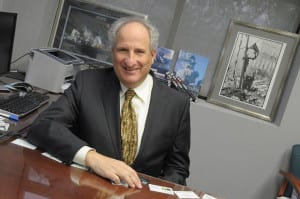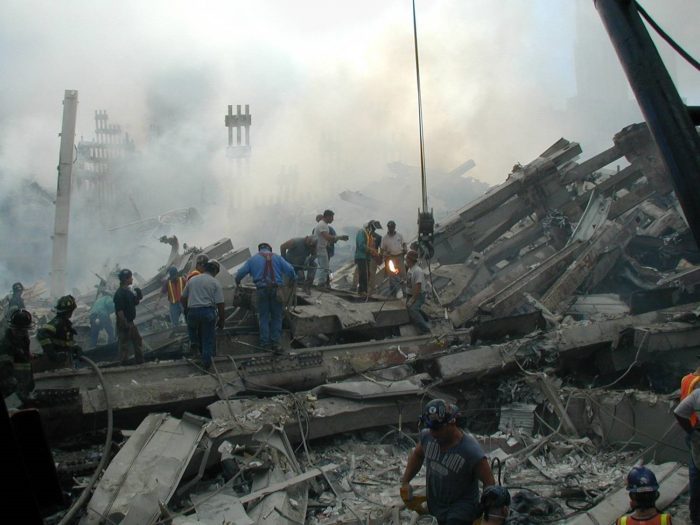SBU receives $147M in federal funding over eight years to treat WTC responders
As the medical challenges to first responders at the World Trade Center site after the 9/11 attacks increase, Stony Brook University’s treatment program has increased the number of people it helps and, recently, also the federal funds to support efforts to treat people.

Recently, the National Institute for Occupational Safety and Health, which is part of the Centers for Disease Control and Prevention, awarded the Stony Brook World Trade Center Health and Wellness Program $147 million over an eight-year period to expand patient care and support infrastructure needs.
The SB World Trade Center Health and Wellness program now sees up to 13,000 patients, which is more than double the 6,000 patients it used to see.
“Patients are getting sicker and their diseases are much more complex with a variety of different systems being involved, both psychologically as well as physically,” said Dr. Benjamin Luft, director of the WTC Wellness Program.
Through the work the SB WTC group has conducted, doctors and researchers have demonstrated that diseases and physical and cognitive challenges associated with aging have occurred more rapidly in the WTC population.
At the same time, COVID-19 has also exacerbated conditions related to exposure to the site, with over 20% of this population experiencing lingering symptoms due to the pandemic.
The WTC first responders have developed chronic sinusitis and a variety of gastrointestinal disorders, such as gastroesophageal reflux disease (or GERD).
While these diseases occur in the general population, “the chronicity is unique,” Luft added.
The SB WTC Wellness program will use the funds to hire additional staff with specialties in pulmonology and psychiatry, among other areas, Luft said.
The majority of the work occurs at the Wellness Center’s main facility and clinic in Commack. SB also runs a site in Mineola. The funds will help revamp the Mineola site as well.
The two sites will use updated technologies and will deploy emerging capabilities in telehealth and artificial intelligence to communicate, diagnose and monitor cases.
Federal funds have supported the effort for 18 years, as NIOSH has funded clinical services for WTC patients treated at Stony Brook.
Medical conditions for this population have included post-traumatic stress disorder and respiratory illnesses.
The funding more than doubles the $60 million, five-year award the WTC Wellness Program received in 2017 from NIOSH that had provided support until the end of March of this year. NIOSH had extended the grant for six months until the current funding started at the end of September, Luft said.
Patients have developed a range of cancers, as well as lung issues such as asthma and chronic obstructive pulmonary disorder.
Additionally, patients are struggling with a variety of mental processing challenges.
“We see a lot of patients who have a variety of cognitive and memory problems,” Luft said.
Luft emphasized that many of the thousands of patients he treats have several health issues simultaneously. By using new technologies, these efforts will enhance the quality of life for people who were on site after the attack.
Luft added that the connection and support from NIOSH have helped support health care for this population.
“The various people at NIOSH are really involved in the program,” he said. “It’s been very satisfying.”
Stony Brook University faculty in public health, psychiatry, pulmonary care, cardiovascular care and neuroscience all take part in ongoing research related to the health issues of WTC responders.
Luft emphasized that the care first responders at the WTC receive tries to be “proactive” with an extensive effort to screen for various diseases, including cancer.
The research and treatment efforts for the WTC population extends to other health care initiatives for people exposed to carcinogens in wars or from other unintentional exposures.
The exposure from 911 is similar to those from burn pits, Camp Lejuene and other hazards.
“The toxins are similar,” Luft said.







